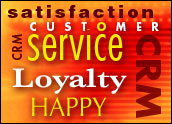
The customer is always right.
This statement has never been more true. Customers are more empowered than ever before — they have unlimited access to any and all information that interests them with the click of a button. How does this affect businesses? How are they reshaping their strategies to account for the rapid shift from business-centric to customer-centric in recent years?
SaaS businesses and enterprises alike are restructuring their platforms and focusing on customer success initiatives. Wooing the customer no longer stops at the point of sale; organizations must adapt a customer success mindset throughout the customer’s entire life cycle.
Choosing the right customer success plan for an organization requires consideration of several things: How big is the company? Is someone on the team well versed on the ins and outs of customer success?
With a multitiered customer success plan, each tier represents and caters to a specific type of company, ensuring the business is covering all its bases and meeting the needs of each of its clients. Tier 1 might make sense for a large Fortune 500 company that requires constant engagement, but it might not make sense for an SMB.
So which tier is right for which client? Here’s a breakdown of the tiers:
Tier 1
Tier 1 is considered the highest tier. Tier 1 offers the most engagement and participation, with customers receiving the highest form of cooperation from the business. Customers are awarded preventative strategies and tools to avoid accidents and/or loss. Services include the following:
- Assigned CSM: Client has direct access to its own dedicated CSM.
- Quarterly Business Review: An analysis and review of client’s goals, issues, etc., is conducted to make sure expectations are satisfied and demands are being met. Client’s ROI for the SaaS vendor’s product is analyzed and reviewed.
- Best Practice Advice: CSM proactively provides client with advice for product usage optimization.
- Training: CSM engages with client to provide proper training.
Tier 2
Tier 2 customers receive partial services, such as support after an accident has occurred. The business helps to monitor the customer’s use of the product and ensures satisfaction. Services include the following:
- Adoption Monitoring: CSM monitors usage and tracks trends to ensure that product adoption has been successful and determines whether training is needed.
- Survey Monitoring: NPS/CSAT survey responses are monitored and tracked.
- Upsell: CSM monitors client for opportunities to upsell, either closing such deals themselves or handing the opportunities to the appropriate person.
- Escalations management: CSM is the point of contact for any communication and takes care of any escalation needs.
- Renewal: CSM engages with the client when contracts are due for renewal.
Tier 3
Tier 3 is the lowest tier, with very little monitoring from the business. The idea is that the customer is hands-on. The customer is able to monitor information and accounts on its own, as well as handle day-to-day issues. This tier is not recommended by the business, unless the customer has previous experience with the product or service. Services include the following:
- Self-Service Support/Troubleshooting
- Self-guided Training Modules and Video Tutorials
- In-Product Tool Tips
- Automated End User Engagement
- Automated Best Practice Advice
This breakdown of tiers aims to encompass every type of customer and ensure customer satisfaction. Though success plans may change from business to business, a solid foundation made up of tiers is the base for any business to accommodate the changing nature of the customer.
Let’s make sure the customer is always right.











































